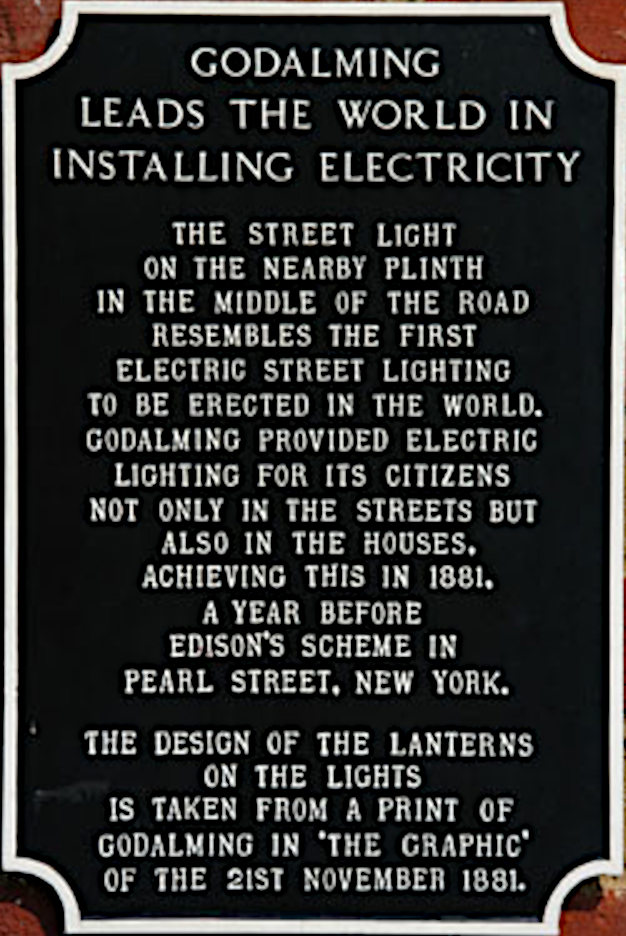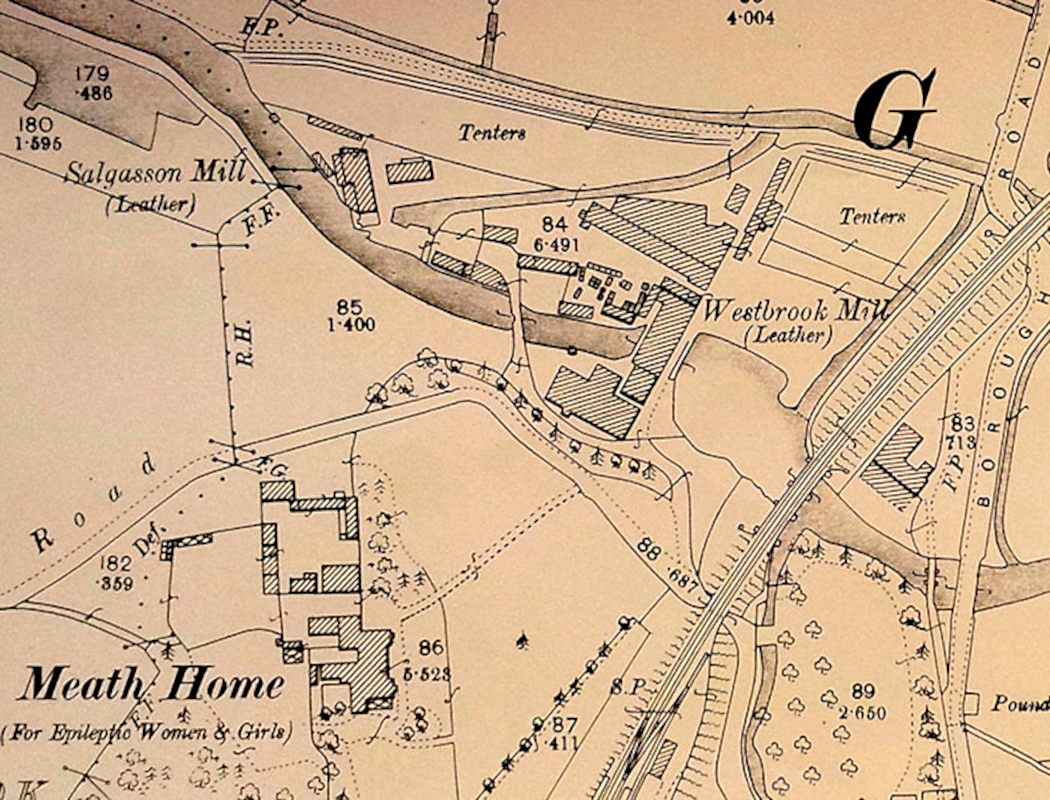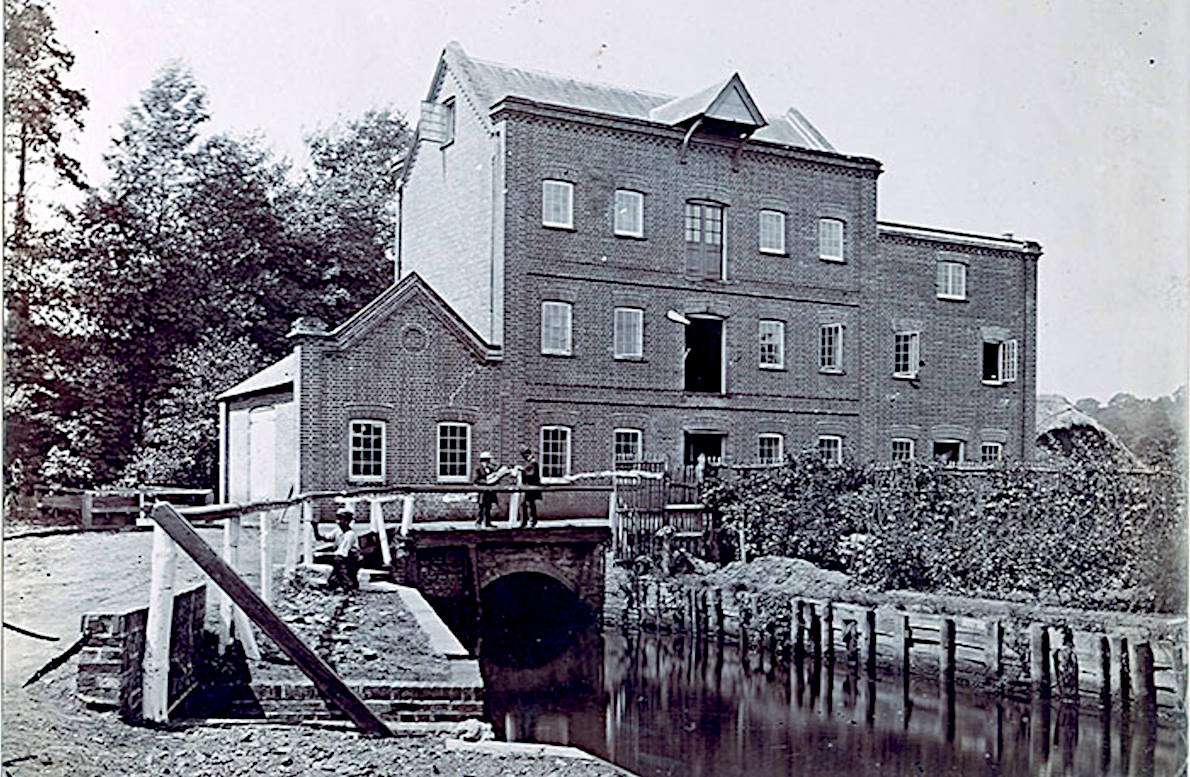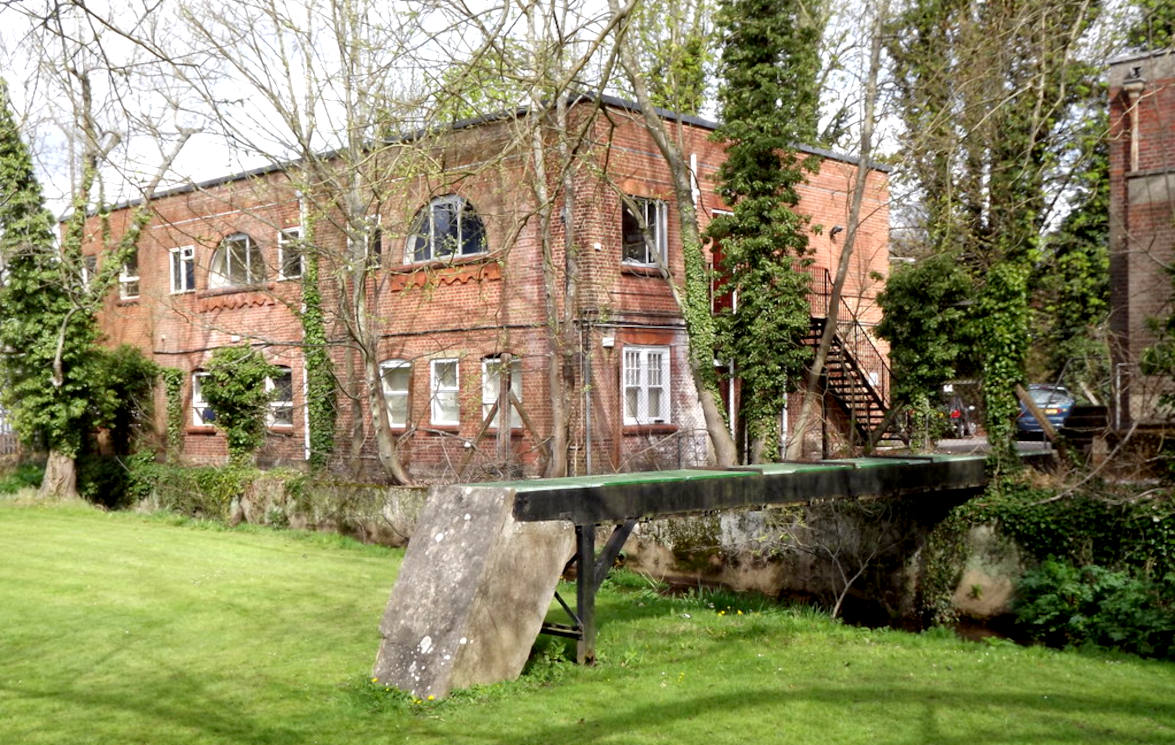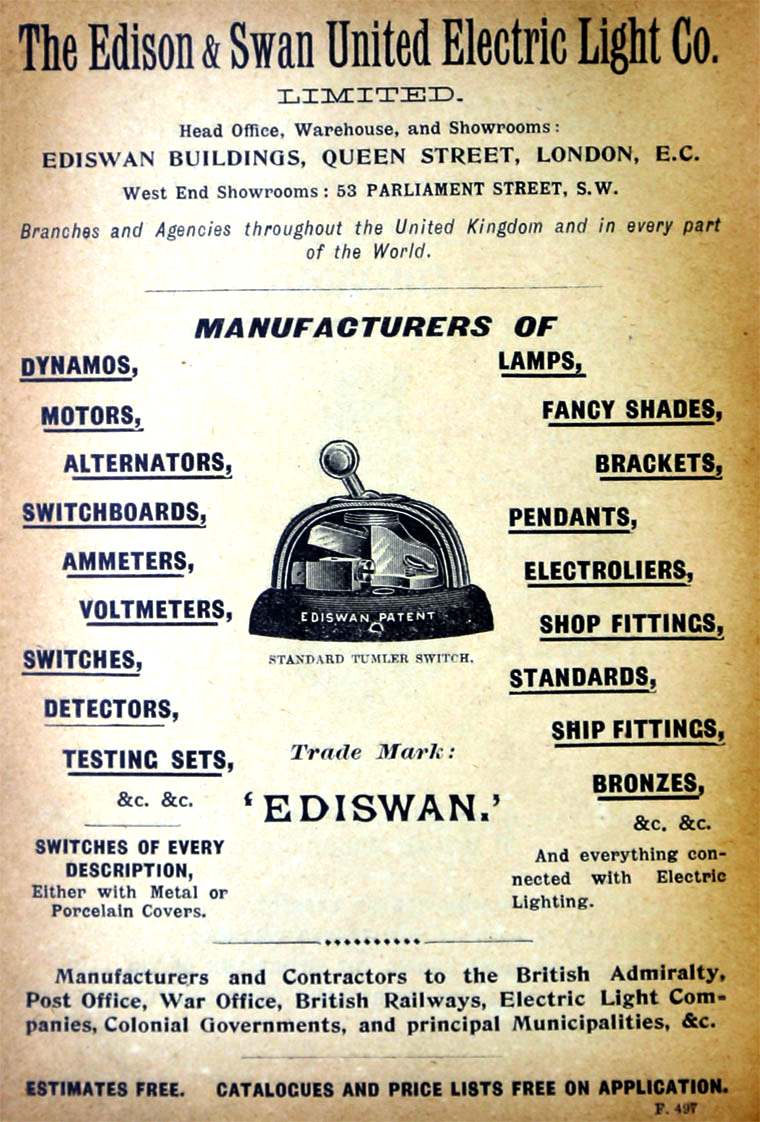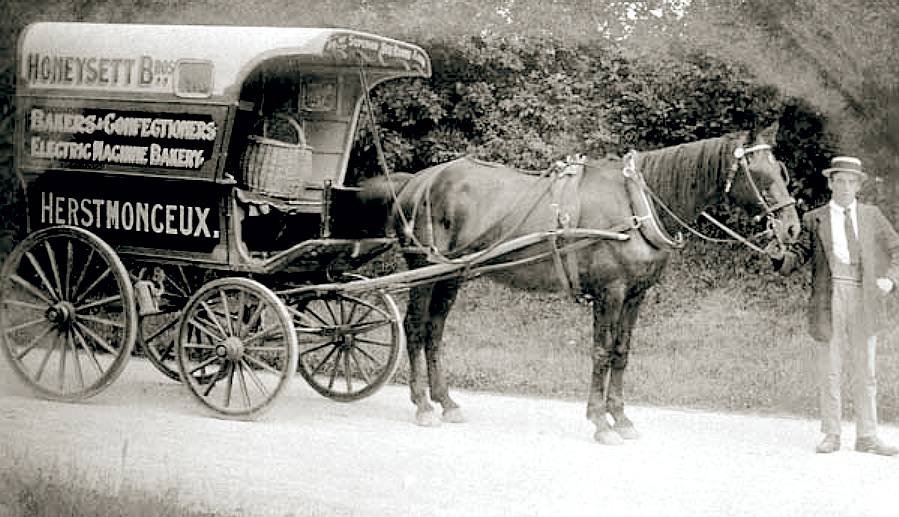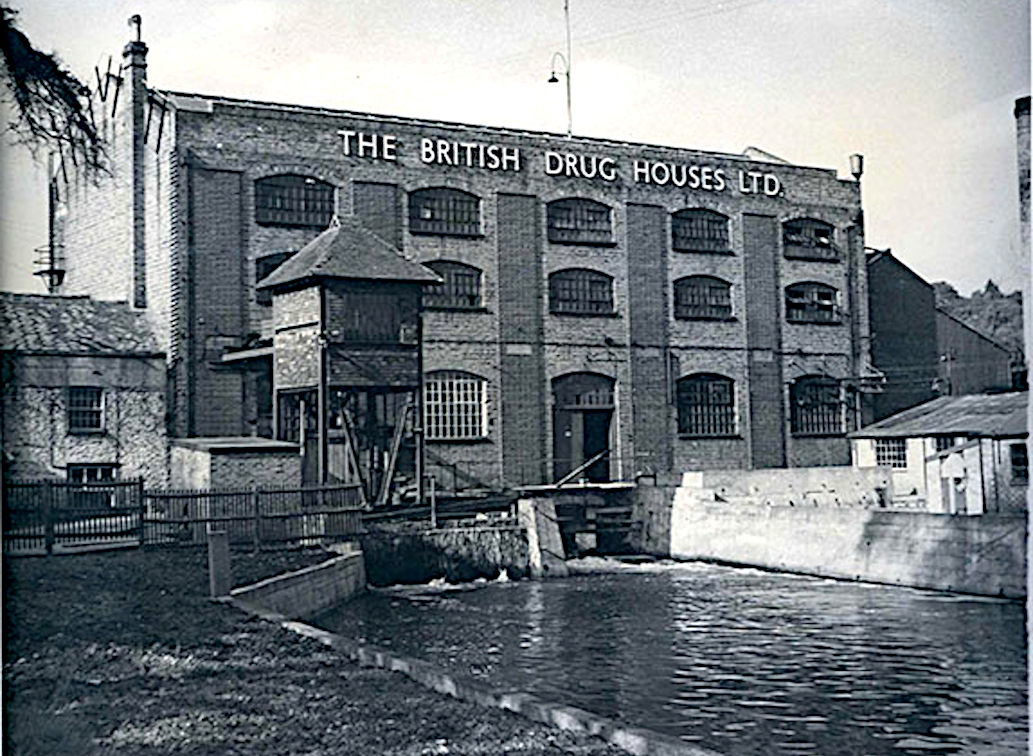|
GODALMING, SURREY - 1881
Please use our A-Z to navigate this site where page links may lead to other sites, or see HOME
|
|
|
The electrical power generation industry began when light bulbs and other devices that needed reliable energy supplies were invented. Telephones and televisions all needed electricity. In 1881, Salgasson Mill was used to power the electricity generator that fed the first public electricity in the world and the street lighting in central Godalming.
In 1881, the world's first public electricity supply started in Godalming, Surrey, powered by a waterwheel installed at the Salgasson mill. There was no battery storage at this installation.
This is probably the site of one of the three mills mentioned in the Domeday Book (1086). In the 19th century it was owned by R & J Pullman: Pullman's business at Westbrook and Salgasson Mills included tanning, the preparation of chamois, buckskin, and saddle leather in connection with Government contracts.
In 1873, a French designed Fourneyron water turbine, manufactured by Macadam Bros. of Belfast, was in operation, bought specifically to make paper by machine. It was removed in 1981 to Westbrook Mill, under the care of Godalming Water Turbine Trust. The oldest and largest surviving turbine of its kind it was sent to the Ironbridge Museum in Shropshire in 2004.
A map of Godalming showing the Salgasson and Westbrook Mills
The Surrey Advertiser of 1st October 1881 (Saturday) reported: “On Monday evening (the 26th September) the upper portion of the Borough of Godalming was lighted by electricity for a few hours as an experiment and continued each night since, the motive power to generate the current being an auxiliary face water-wheel at the Westbrook Mills, of Messrs. Pullman brothers, the skin dressers, who have made arrangements for lighting their mills with the Swan lights, and for the larger open spaces with Siemen’s differential lamps of 300 candle-power each.”
In 1879 Sir Joseph Wilson Swan had invented the incandescent light where a filament was inside a vacuum sealed bulb of glass which gave about 30 candle-power. Thomas Alva Edison later improved on Swan's design.
The Surrey Advertiser also reported that three Siemen’s lights had been erected in the town, on iron poles 22 feet high, one in Deanery Place opposite the vicarage, another on the south-side of the Town Hall (then held in the Pepperpot) to light Ockford Road (which at this time included the Upper High Street) and the third opposite the Town Clerk’s office.
Godalming claimed world attention in September 1881 as the first town in the world to install a public electricity supply. It was Calder and Barrett who installed a Siemens AC Alternator and dynamo, powered by a waterwheel at Westbrook Mill, on the River Wey. There were several supply cables, some laid in gutters, which fed seven arc lights and 34 Swan incandescent lights. Floods in late 1881 caused problems and later Calder and Barrett withdrew from the contract. It was taken over by Siemens, under which the supply system grew and several technical problems were solved. But in 1884, the whole town reverted to gas lighting as Siemens failed to tender for a contract to light the town. This followed a survey they undertook that failed to show adequate support for the business to be viable. Siemens had also lost money on the scheme in the early years, but was prepared to stay on in order to gain experience. Electricity returned to the town on January 1, 1903.
The Surrey Advertiser reported the Mayor (Alderman Eager) and members of the council had visited Messrs Pullman’s Mills to see the machinery at work.” Edward Eager (1842-1907) was a Justice of the Peace and the mayor elect from 9th November 1880-1. He lived in the High Street but by 1883 had moved to Sussex.
This hydroelectric project was on a small scale, with a 10 horsepower (7.5 kW) generator running 4 arc lamps and 27 incandescent lamps.
WATER POWER
A contract had been made between the Town Council and Pullmans tannery that in compensation for the use of their water rights, they would be given lights for the yards, factory buildings and Mr J Pullman’s house. Pullmans business included the preparation of chamois, buckskin, and saddle leather and they undertook Government contracts. To have the mills and yards lit day and night for the men to work by was a great advantage and by the 16th December 1881 The Times reported that Pullmans had three arc lights and fifteen Swan lamps lighting the mills.
In January 1882 Siemens agreed to light the town by transferring the generating plant from Pullmans mill to the town and laid mains cables in the gutters. George Stephen Tanner (1868-1954) recorded his reminiscences and wrote: “When the floods came it upset in some way the water power and so the dynamos were taken to a shed at the back of the old White Hart and an ordinary traction engine used with a wide strap on its wheel to connect to the dynamo. There was a very nice German (Edward Friedrich Herman Henrich Lauckert) here to look after the technical side”.
On the 18th August 1882 a new Electric Lighting Act was introduced giving powers to
utilities to break up the streets to lay cables. Siemens continued their annual contract to operate without laying cables in gutters until 1884. Alexander Siemens reviewed the private sales when he had about a dozen consumers with 160 lamps but needed 400-500 private lights to make it economic and according to the Electrician in April 1884:
“was not prepared to tender on a year-to-year basis to gain experience…. except on a legal footing”. The electricity supply proved too expensive and the local gas company tendered a cheaper cost to light the town.
As with the Holborn
Viaduct station built by built by
Joseph
Swan, Thomas
Edison's Edison Electric Light Company. Gas returned as the source of lighting on the 1st May 1884.
Lighting per half night by gas was £893, while electricity at 25 candle-power was £649. The present contract with the Gas Company was until 1st January 1903 and until then the number of lamps lighted by gas was to be reduced to 150. The committee recommended that 86 of the public lights be lighted by electricity as soon as possible and that the Borough be lighted with lamps giving a minimum light of 25 candle-power, and the agreement with the Godalming Gas Company be terminated as from 1st January 1903.
SWITCHES & BULBS - Where would we be without electric lighting. A battle royal ensued in the law courts and Thomas Edison and Joseph Swan slogged it out in the London High Court, ending with the combatants working together as the Edison & Swan United Electric Light Co. ELECTRIC BAKERY - The earliest surviving generating station, dating from C. 1900, with battery based load levelling as the core technology, coupled to a 48 volt DC generator, is in the little village of Herstmonceux, Sussex.
Unfortunately, the historic mill buildings shown here could not be considered as UNESCO world heritage sites, as they no longer exist.
CONTACTS
Godalming Museum https://godalmingmuseum.org.uk/
REFERENCES Hawking Electrical Guide #5
The electrical power generation industry began when light bulbs and other devices that needed reliable energy supplies were invented. Telephones and televisions all needed electricity.
Please use our A-Z INDEX to navigate this site
This website is provided on a free basis to promote zero emission transport from renewable energy in Europe and Internationally. Copyright © Universal Smart Batteries and Climate Change Trust 2022. Solar Studios, BN271RF, United Kingdom.
|
